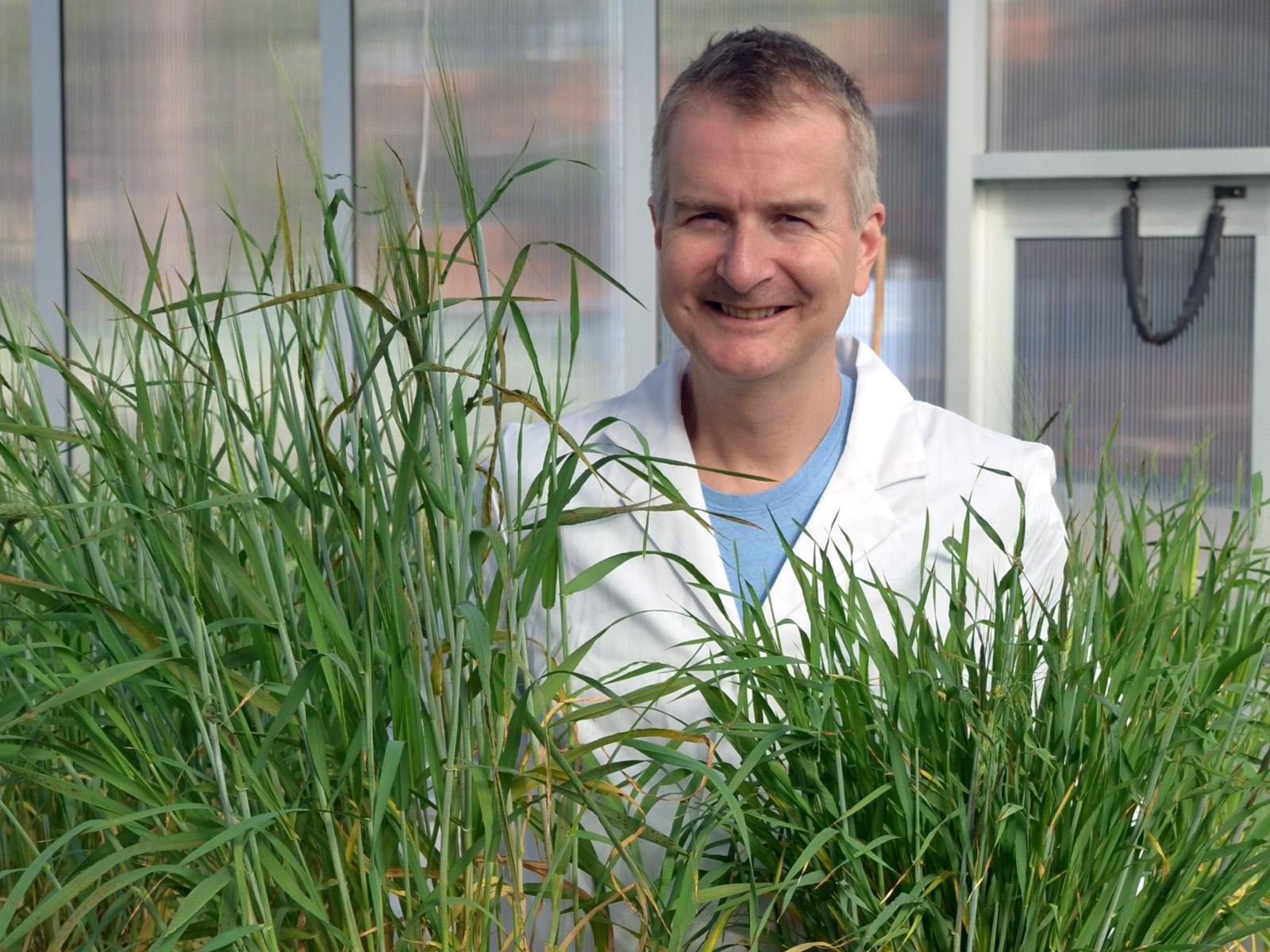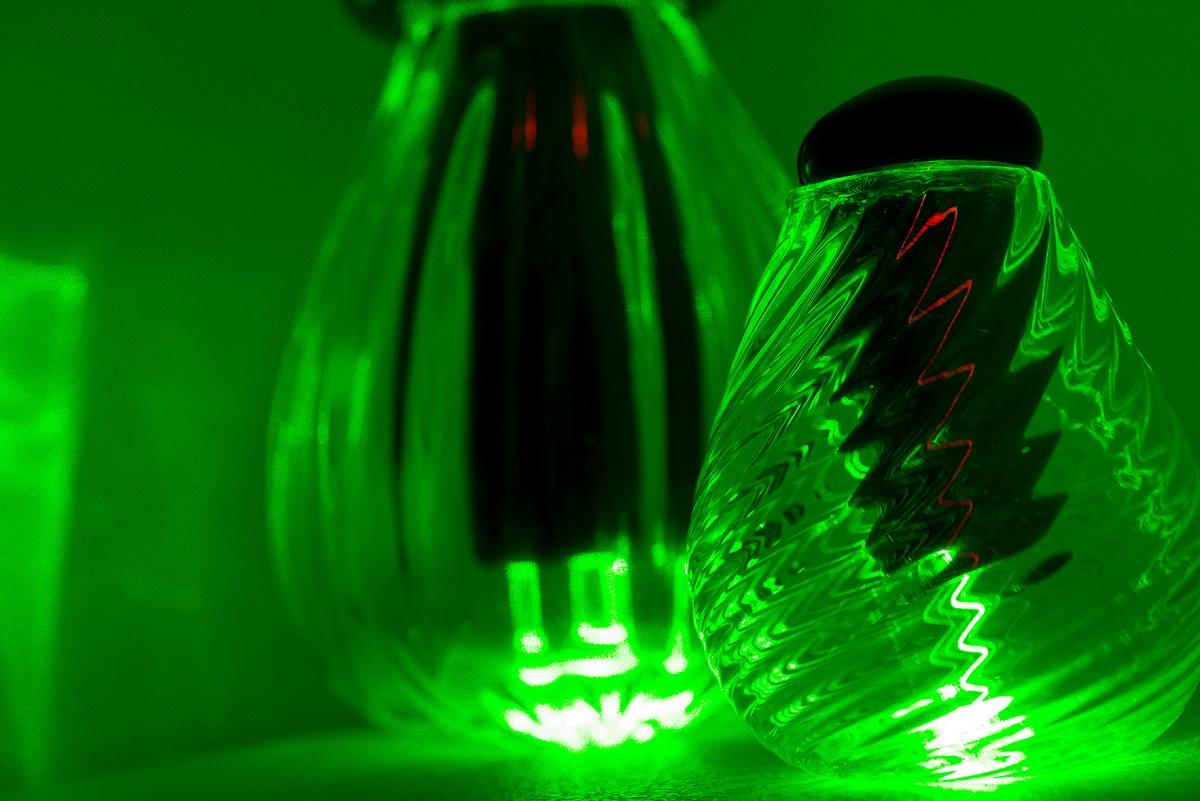Scientists in the news this week: August 2020
From wine to plant science and ecology to chemistry, University of Adelaide scientists are sharing their research achievements and expert advice across diverse media.
Here are the stories of our scientists and science graduates in the news during August 2020.
Agriculture, food and wine

Dr Roberta De Bei (pictured) is working with Adelaide Hills grape growers to research the best recovery practices from fires. Dr De Bei is currently experimenting with a range of pruning techniques and a range of ways to access damages over large areas of land including using drones and satellite imaging.
This was featured in the Adelaide Advertiser, Cairns Post, Toowoomba Chronicle and Gold Coast Bulletin.
Dr Rhiannon Schilling features on Mirage News for receiving the University of Adelaide’s 2020 Young Tall Poppy Science Award for her work in improving crops to overcome soil constraints.
ABC held an interview with Professor Vincent Bulone who discussed the importance of knowing the difference between compostable, recyclable and biodegradable products. Professor Bulone also discussed the development of materials, typically farm waste generated by growers, to make single use packaging that is compostable.
Professor Christopher Preston featured in Rural Business, Grain Central and Stock Journal discussing a suite of new Group C herbicides that can be used tactically to manage and control early germinating broadleaf weed. This would help to keep pulses in southern farming systems profitable.
SeedQuest featured Dr Huajian Liu's research in which the nitrogen content in wheat has been unearthed by using the optimal wavelength ranges, band centres and bandwidths for hyperspectral sensors. This is a more accurate, less destructive, time efficient and inexpensive method as compared to more traditional methods.
Professor Maria Hrmova is the project leader of an international collaboration that has produced research published in The Plant Journal. The research has uncovered a new biochemical mechanism that is fundamental to plant life. Professor Maria Hrmova says that this discovery contributes important knowledge about how plant cell walls can be formed, structured and re-modelled. This news was covered in Scimex and The National Tribune.
The new GRDC Southern Panel to Represent Grain Growers' Interests was highlighted in the North West Express and Sea Lake & Whycheproof Times Ensign. Outgoing Deputy Chair, Professor Mike McLaughlin, was acknowledged for his contributions.

An international team of researchers including Dr Philip Brewer, has produced study which has found how plant hormones manage plant growth.
The plant hormone known as strigolactones suppresses the transportation of auxin, the main plant hormone involved in vein formation, so that vein formation is regulated. This will contribute vital information in how to improve crop productivity.
This was shared across news channels such as Scimex, Science Daily, Mirage News and Phys.org.
Novel and effective weed management strategies for growers to implement on no-till and mixed faming systems in South Australia have been identified through long-term research. This research was led by Charles Sturt University plant biologist Professor Leslie Weston and the University of Adelaide’s Professor Christopher Preston. This was featured in Stock Journal.
Farm Weekly and website Public have published a reminder for growers to check the status of legume nodulation over winter and early spring. This includes following four simple steps – collect, clean, count and calculate. Dr Maarten Ryder featured in this article giving his expert advice.
Professor Kerry Wilkinson is working with Cassegrain Wines on a project focused on the impact of smoke taint from bushfires on grapes and management of this problem in the future. This continued to be in the news, this time in Australian & NZ Grapegrower & Winemaker.
Dr Katja Hogendoorn had ongoing news coverage, this week in The Islander and on 3RRR FM, discussing the green carpenter bee which has faced a significant increase in the risk of extinction following the bushfires on Kangaroo Island.
The collaborative project led by Associate Professor Matthew Denton that produced a nitrogen reference manual for the Southern Cropping Region was covered again in the news, in the Buloke Times.
Animal and veterinary sciences
Researchers Dr Anne-Lise Chaber and Dr Susan Hazel continue to make headlines across major news channels for their work on an international project to train sniffer dogs to detect COVID-19.
Drs Chaber and Hazel are coordinating the Australian arm of this international alliance, with local dogs being made available through organisations in various states.
Biological sciences

Professor Ivan Nagelkerken was the lead author of a report that has found more evidence that marine ecosystems are being negatively impacted by climate change resulting in rising sea temperatures. This has a great influence on marine food webs and the abundance of different types of species.
The research has gained significant worldwide attention, including through The Guardian, News Wise, Scimex, Ecology Way, The National Tribune, XinhuaNet, The Namibia Press Agency, News US, TechSabado, Taipei Times, ZME Science and Meaww.
Image: Marine ecosystem, Whakaari Island, New Zealand. Courtesy Sean D. Connell
Dr John Conran is featured on EurekAlert as a co-author of a recent study published in Climate of the Past. The findings from research of leaves in a 23 million year old forest lake bed have been linked to high levels of carbon dioxide in the atmosphere causing increased plant growth and the hot climate of the time period. This discovery contributes further knowledge to the understanding of how rising CO2 warms the earth, how this alters the dynamics of plant life and how this may affect us now and in the future.
Adam Toomes is the lead author of a study that has analysed public enquires regarding the legality of the importation of exotic species to the Australian Commonwealth Department of Agriculture, Water and the Environment. The findings from this analysis show that exotic pets desired by Australians are significantly biased towards threatened species, invasive species and also species that are prominent in the United States exotic pet trade. This is important for the biosecurity of Australia as it may contribute to the prediction of illegally smuggled pets through these desires.
This research was covered in the news on Nature World News, EurekAlert, Brightsurf and Phys.org.
PhD candidate Tasya Sarira was a part of a team of researchers who have found that while reforestation is a promising climate solution, there are considerations to take such as the suitability of land for trees, financial and operational constraints. The research found that these constraints can greatly impact on the potential of reforestation in Southeast Asia. This was published in Nature and shared in the news via Science Daily, NUS News and BrightSurf.
Professor David Adelson is part of a global collaborative project in which they have sequenced the genome of the tuatara – a rare reptile found only in New Zealand whose ancestors once roamed the earth with dinosaurs. Adelson carried out key analysis of the tuatara genome, discovering that it has an unusual architecture where it is half-way between mammal and reptile.
This was published in Nature and was prominent in the news on platforms such as Australian Online News, scimex, Cosmos Magazine, Daily Mail and Brinkwire.

Marine biology PhD graduate Tulio Rossi’s company Animate Your Science has teamed up with University of Adelaide biomedical scientist Dr Katharina Richter and surgeon Dr Markus Trochsler to create a unique animated project that pits humans in a life-and-death fight against infections.
This National Science Week activity featured in *The Advertiser, Townsville Bulletin, Toowoomba Chronicle, Gold Coast Bulletin and the Cairns Post.
On a side note, game show enthusiasts would have seen Dr Richter on Tom Gleeson’s Hard Quiz on ABC television late last month.
Dr Danny Wilson and his team will be running an art-science workshop on how to communicate science concepts on Friday August 21. This was shared on The National Tribune website as a part of ‘Parasites Online for Science Week’.
Professor Frank Grützner and Professor Sean Connell are among a group of University of Adelaide researchers who will feature as experts in an online National Science Week Q&A event exploring ‘what makes science good’.
- Professor Grützner will use the EchidnaCSI project as an example of how citizen science can be a powerful tool for research, public engagement and education.
- Professor Connell will talk about the innate attraction of communicating optimism and the influence it can yield in driving positive change.
The event was promoted on the National Science Week channels and medianet.

Dr Felicity Coutts and Associate Professor Diego Garcia-Bellido are delving into The Great South Australian Fossil Debate alongside two other palaeontologists in a free online event on Sunday 23 August. This event was shared on the National Science Week channels and medianet.
PhD candidate Katherine Hill is using a new forensics chemistry technique to analyse the red-eared slider turtle shell which is illegally exported into Australia. This technique is vital as it can aid in discovering both the origins of red-eared slider turtles found in the wild and how long they have been there. This detection technique is a part of a suite which has been developed to help develop future management and protect Australia’s biosecurity. This was featured on The Adelaide Advertiser, Get Regional and ABC.
PhD candidate Tahlia Perry continued to be in the news, this time in the Hopetoun Courier & Mallee Pioneer, discussing echidnas, their mating season, and Echidna CSI (Conservation Science Initiative).
Professor Frank Grützner also featured again in the news speaking about various attributes of echidnas on Radio National and ABC Radio.
Physical sciences

Professor Heike Ebendorff-Heidepriem, Deputy Director of the Institute for Photonics and Advanced Sensing (IPAS), is a part of a consortium of scientists who were inspired by glass blower Karen Cunningham’s discovery of using diamonds and glass to make a hybrid material. This revealed how high-performance diamond sensors can be made using conventional glass fibres, a problem scientists had been trying to work around for over a decade.
This was covered online through Cosmos Magazine, Photonics Media, Optics, Nanowerk, BrightSurf and Aurus.
Image: Optic vessels made of glass and diamond by artist Karen Cunningham. Courtesy of Michael Haines Photography.
Chemistry Professor Stephen Lincoln comments to ABC News, ABC Online and MSN about the location of ammonium nitrate stores in New South Wales, after the recent disaster in Beirut, Lebanon.
Students and alumni
Wine graduate Megan Glaab, co-founder and winemaker at Ryme Cellars and Uphold Wines, speaks to Wine Enthusiasts about her journey to winemaking and the variety of paths others can take.
Wine graduate James Radcliffe features on Vaaju as the winemaker for Thousand Islands Vineyard. Their Wellesley Island white wine has been named as one of the best white wines that should be tried this summer.
The winery Swings & Roundabouts have announced the addition of a new winemaker, wine graduate Jodie Barton. This was shared in the Busselton Dunsborough Times.
Dr Sijing Li, a wine graduate who works at the National Grape and Wine Industry Centre, was featured in Australian & NZ Grapegrower & Winemaker discussing her pathway to study viticulture and oenology and her next project which is focused on smoke taint.
Brendan Kupke was featured in GRDC GroundCover and the SAGIT website for being mentored by fellow agricultural sciences graduate Dr Kenton Porker as a part of the GRDC-South Australian Grain Industry Trust Fund (SAGIT)-SARDI grains traineeship program.
This was part of a larger one-year feasibility project led by Dr Porker that explored alternative options for growers to use when managing crop development to maximise yields. Kupke was able to conduct a large screening project determining the impact of a range of commercially available plant growth regulators and hormones on flowering dates for wheat, canola and barley.
Marine biology student Tristan Ryan is featured on the Regional Development Australia Eyre Peninsula website as a 2020 tertiary scholarship recipient.
Share your story
If you've featured in the media this week and don't get a mention above, send an email with the details to Rose Fitzmaurice in the Faculty of Sciences Marketing and Student Recruitment team.
